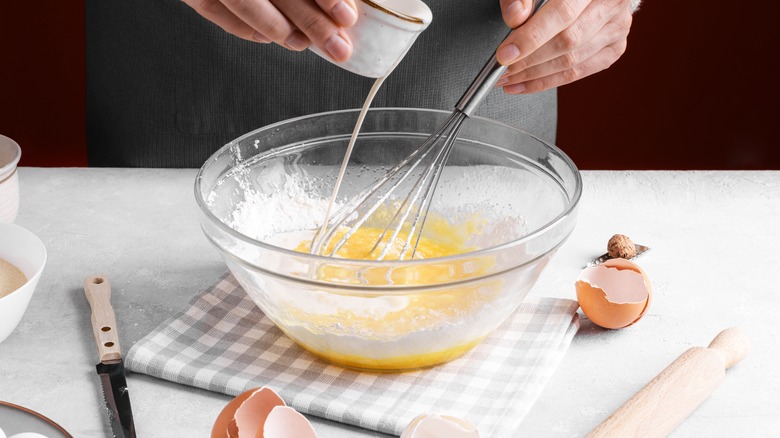The Common Dairy Mistake That Will Completely Ruin Your Pumpkin Pie
Whipping up a pumpkin pie from scratch is a worthwhile feat, and the best part is that there's always room for customization. For example, you can infuse the crust with cocoa powder or make the filling a little boozy. However, not following the recipe to a tee is often an easy way to screw up your pumpkin pie, particularly the dairy element. Various pumpkin pie recipes mandate specific types of milk, and this isn't arbitrary — it's a key factor in the art of pie-making. Substituting one milk for another might seem like a trivial swap, but it can have profound repercussions on both the texture and taste of your pumpkin pie.
The culinary science behind this milk selection begins with the role of milk in the pie's structure. Milk proteins, such as casein and whey, are crucial for setting the custard-like filling. These proteins form a network that traps moisture and stabilizes the pie as it bakes. Sweetened condensed milk, for instance, imparts a relatively high sugar content, which contributes to the pie's beloved aroma and richness. This is the result of the sugars — both natural and added — interacting with the other ingredients like the pumpkin purée and spices. So, when you replace sweetened condensed milk with regular whole milk, the reduced sugar content disrupts the pie's balance, leading to a less cohesive, blander filling.
The type of milk you use can make or break your pumpkin pie
Milk's fat content also plays a pivotal role in the final product. Whole milk, for example, contains a moderate amount of fat molecules (not as many as you may think, though), which interact with the pie's starches and proteins to create a luscious, velvety mouthfeel. Substituting whole milk with skim milk, which has significantly less fat, results in a much thinner, less satisfying forkful that will leave your pie lacking that distinctive creaminess.
Beyond texture, milk greatly influences the pie's overall flavor profile. Evaporated milk, for instance, is concentrated and slightly caramelized during its production. Using something like almond milk, which lacks cow milk's inherent sweetness and depth, could lead to a flatter, less complex palate. Case in point, the unique acidity of buttermilk contributes to a tangier bite akin to, say, pumpkin cheesecake. Therefore, if you were to replace buttermilk with regular milk, the pie could turn out overly sweet, losing that delicate equilibrium.
Choosing the right type of milk is crucial when crafting a homemade pumpkin pie. Substituting one milk for another can disrupt the tactful balance of milk proteins, fat content, and character, resulting in a less-than-ideal pie. By understanding the chemistry behind milk's role in pumpkin pie, you can confidently stick to the recipe where it matters and ensure a delectable masterpiece.

